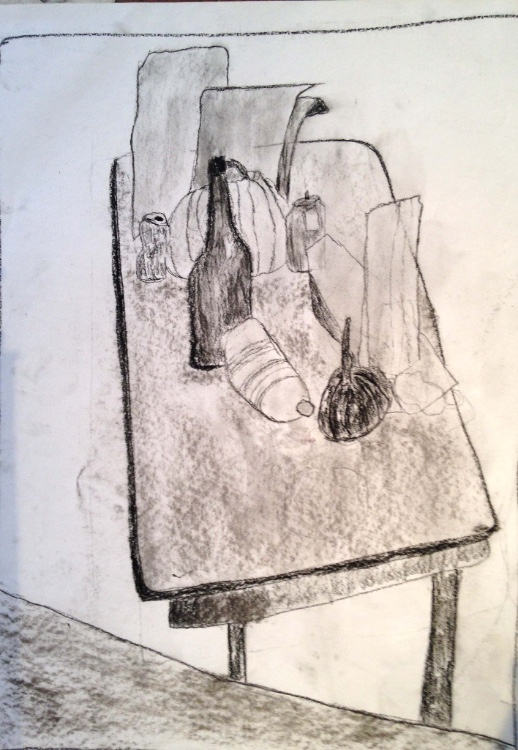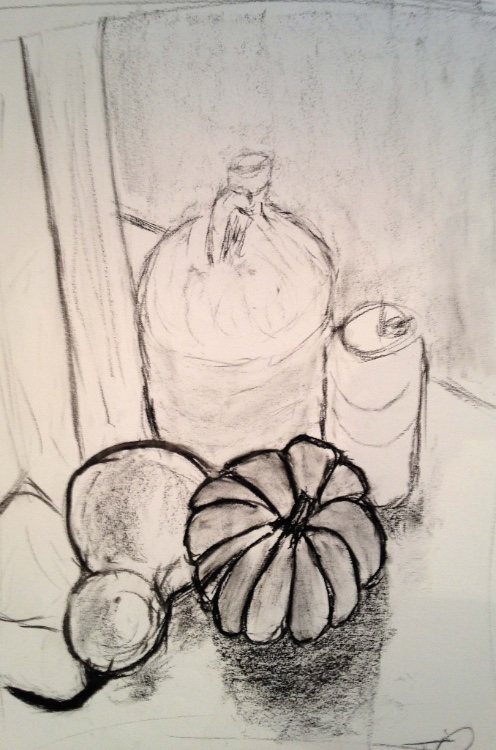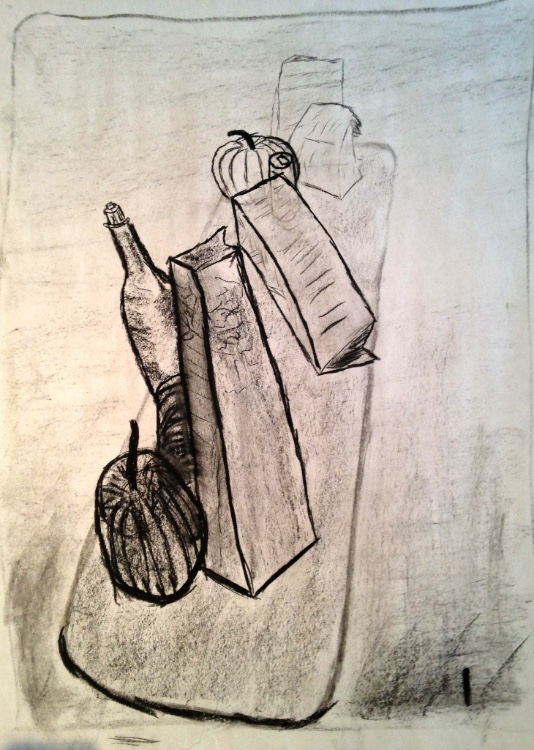The process of making a drawing could be described as being similar to that of a boxing match. It can be a bit of a fight, and tactical strategies may have to be employed. As the drawing develops, a change of approach may be necessary, and flexibility, courage, and openness of mind, and persistence are almost always needed in order fro the drawing to develop.
There are also similarities to the developing patterns of a love affair, with all its ups and downs, hope, and despair-- the optimistic beginning -- empty white paper -- full of potential and the coaxing, projecting, courting, and tempting of the drawing into existence or the holding, hanging onto, losing, re-appraising restructuring.
Sometimes you may feel like you are winning, and other times you may feel like you are losing. In some ways the drawing will have a life of its own.
A selection of drawings
Here are some drawings from my class at Rocky Mountain College.
After discussing the illusion of depth, students were asked to draw a collection of objects as they were placed one-by-one on a table. Each time something was added, the drawing changed, as new objects blocked parts or all of another. It was hard for students to erase away their careful drawings, but they learned fast to be more flexible and save details until the very end.
We critiqued the first drawing and students composed a second drawing (of the assembled still life) using a viewfinder and working with overlapping, dimishing sizes and contrast to distinguish objects that appeared closer to those farther away.
This same project was used this week in my Wednesday class. Below are a few examples of how students composed their final drawing.









